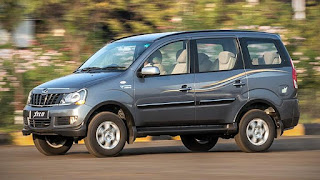Shift Handover Event Detection
Shift Handover Event Detection
The detection of shift handover events is based on two observations: 1) Shared taxisgo to the same agreed location during the rough shift handovertime slot of the day with vacant status; 2) shared taxi park atthe agreed shift handover location for some time (with vacantstatus) to ensure taxi handover.The detailed shift handover event detection process is elab-orated as follows. First, we identify the parking locations in apassenger-searching trajectory using the same method reportedin [31]. We divide the city map into grid cells of 50 m×50 mand split a day into half-overlapping 20-min time frames. Inach time frame, we record the days that a taxi visits eachgrid cell. If the shift handover location falls near the edge ofa cell, the shift handover events may scatter in the neighboringcells due to GPS error. To address this problem, in addition tocounting the days a taxi visits each cell, we also count the daysit visits the neighboring cells. Since we count the visit to neigh-boring cells, the same shift handover event may correspond toseveral candidate cells. We can combine these candidate cellsinto one as they might be produced from the same traces. Inorder to accommodate early or delayed shift handover events,we expand the time frame for shift handover event detectionto 2 h. In real life, there is anomalous shift handover that thetwo drivers change the shift handover time and location forreasons such as personal issues or temporarily blocked roads.Therefore, we may be unable to find the shift handover event inall days. In practice, if the number of days that the taxi visits agrid cell during the rough shift handover time slot is greaterthan 25 in a month, we mark the grid cell as the candidateshift handover location. Furthermore, if it is the only candidatewithin the 15:00–19:00 time slot, it is said to be the afternoonshift handover location; if it is the only candidate within the03:00–8:00 time slot, it is the morning shift handover location.If there are more than one candidate cells, we consider it as anuncertain (failed) case. Navagraha Temple Package in Kumbakonam
With the shift handover event detected, the GPS traces ofthe two shared taxi drivers are naturally separated. For theanomalous shift handover aforementioned, we simply choosethe vacant parking location in the digital trace that is closestto the middle of the detected shift handover time slot andseparate the digital trace of that day at that point.One possibility that may cause false shift handover eventdetection is when some drivers wait for passengers everyday atcertain popular locations (e.g., railway/bus stations and grandhotels) during a certain period of time. This appears to havea similar pattern as the shift handover event. However, weobserve that the majority of these passenger waiting events arefollowed by an immediate “occupied” status (indicating thata passenger is picked up successfully), whereas the shift han-dover event seldom takes place at a popular place and the taxiusually has vacant status after the taxi leaves the shift handoverlocation. In such a way, we can filter out most of the false shifthandover events.With the proposed algorithm, we successfully identified theshift handover events (including location and time) for 4773taxis out of the 6863 taxis. The remaining 2090 taxis do notfollow the fixed shift handover pattern, which may be due tothe following two reasons: 1) The location and time to handover the taxi vary from day to day based on two drivers’agreement; 2) there are some taxis served by only one driver.To exclude the error introduced by the shift handover eventdetection algorithm, we only keep the taxi traces from the taxiswhose shift handover events were successfully identified (i.e.,the 4773 taxis) for experiments. It is believed that the 9546 in-dividual drivers’ traces from 4773 taxis are enough to illustrateour proposed idea and show meaningful statistical results fordiscoveringefficientandinefficienttaxi service strategies.2) Statistical Study of Taxi Shift Handover Location andTime:The geographical distributions of the morning anafternoon taxi shift handover locations are shown in Fig. 2(a)and (b), respectively. It can be observed that most of the taxishift handover events are not taking place in popular areassuch as the downtown and railway stations. Another interestingobservation is that many drivers choose to hand over the taxinear bus stops during afternoon shift handover time slot. Thismay be because the taxi drivers need to take buses for the taxihandover.The time distributions of morning and afternoon taxi shifthandover events are shown in Fig. 3(a) and (b), respectively.The morning taxi handover time is almost evenly distributedbetween 4:00 and 7:20, whereas the afternoon shift handoverevents mainly take place between 16:40 and 17:20, which explains why people in Hangzhou find it difficult to find taxisaround this time period.https://srisivasakthitravels.com/
https://goo.gl/maps/1rNVoifRFQ9snSor6
The detection of shift handover events is based on two observations: 1) Shared taxisgo to the same agreed location during the rough shift handovertime slot of the day with vacant status; 2) shared taxi park atthe agreed shift handover location for some time (with vacantstatus) to ensure taxi handover.The detailed shift handover event detection process is elab-orated as follows. First, we identify the parking locations in apassenger-searching trajectory using the same method reportedin [31]. We divide the city map into grid cells of 50 m×50 mand split a day into half-overlapping 20-min time frames. Inach time frame, we record the days that a taxi visits eachgrid cell. If the shift handover location falls near the edge ofa cell, the shift handover events may scatter in the neighboringcells due to GPS error. To address this problem, in addition tocounting the days a taxi visits each cell, we also count the daysit visits the neighboring cells. Since we count the visit to neigh-boring cells, the same shift handover event may correspond toseveral candidate cells. We can combine these candidate cellsinto one as they might be produced from the same traces. Inorder to accommodate early or delayed shift handover events,we expand the time frame for shift handover event detectionto 2 h. In real life, there is anomalous shift handover that thetwo drivers change the shift handover time and location forreasons such as personal issues or temporarily blocked roads.Therefore, we may be unable to find the shift handover event inall days. In practice, if the number of days that the taxi visits agrid cell during the rough shift handover time slot is greaterthan 25 in a month, we mark the grid cell as the candidateshift handover location. Furthermore, if it is the only candidatewithin the 15:00–19:00 time slot, it is said to be the afternoonshift handover location; if it is the only candidate within the03:00–8:00 time slot, it is the morning shift handover location.If there are more than one candidate cells, we consider it as anuncertain (failed) case. Navagraha Temple Package in Kumbakonam
With the shift handover event detected, the GPS traces ofthe two shared taxi drivers are naturally separated. For theanomalous shift handover aforementioned, we simply choosethe vacant parking location in the digital trace that is closestto the middle of the detected shift handover time slot andseparate the digital trace of that day at that point.One possibility that may cause false shift handover eventdetection is when some drivers wait for passengers everyday atcertain popular locations (e.g., railway/bus stations and grandhotels) during a certain period of time. This appears to havea similar pattern as the shift handover event. However, weobserve that the majority of these passenger waiting events arefollowed by an immediate “occupied” status (indicating thata passenger is picked up successfully), whereas the shift han-dover event seldom takes place at a popular place and the taxiusually has vacant status after the taxi leaves the shift handoverlocation. In such a way, we can filter out most of the false shifthandover events.With the proposed algorithm, we successfully identified theshift handover events (including location and time) for 4773taxis out of the 6863 taxis. The remaining 2090 taxis do notfollow the fixed shift handover pattern, which may be due tothe following two reasons: 1) The location and time to handover the taxi vary from day to day based on two drivers’agreement; 2) there are some taxis served by only one driver.To exclude the error introduced by the shift handover eventdetection algorithm, we only keep the taxi traces from the taxiswhose shift handover events were successfully identified (i.e.,the 4773 taxis) for experiments. It is believed that the 9546 in-dividual drivers’ traces from 4773 taxis are enough to illustrateour proposed idea and show meaningful statistical results fordiscoveringefficientandinefficienttaxi service strategies.2) Statistical Study of Taxi Shift Handover Location andTime:The geographical distributions of the morning anafternoon taxi shift handover locations are shown in Fig. 2(a)and (b), respectively. It can be observed that most of the taxishift handover events are not taking place in popular areassuch as the downtown and railway stations. Another interestingobservation is that many drivers choose to hand over the taxinear bus stops during afternoon shift handover time slot. Thismay be because the taxi drivers need to take buses for the taxihandover.The time distributions of morning and afternoon taxi shifthandover events are shown in Fig. 3(a) and (b), respectively.The morning taxi handover time is almost evenly distributedbetween 4:00 and 7:20, whereas the afternoon shift handoverevents mainly take place between 16:40 and 17:20, which explains why people in Hangzhou find it difficult to find taxisaround this time period.https://srisivasakthitravels.com/
https://goo.gl/maps/1rNVoifRFQ9snSor6




Comments
Post a Comment